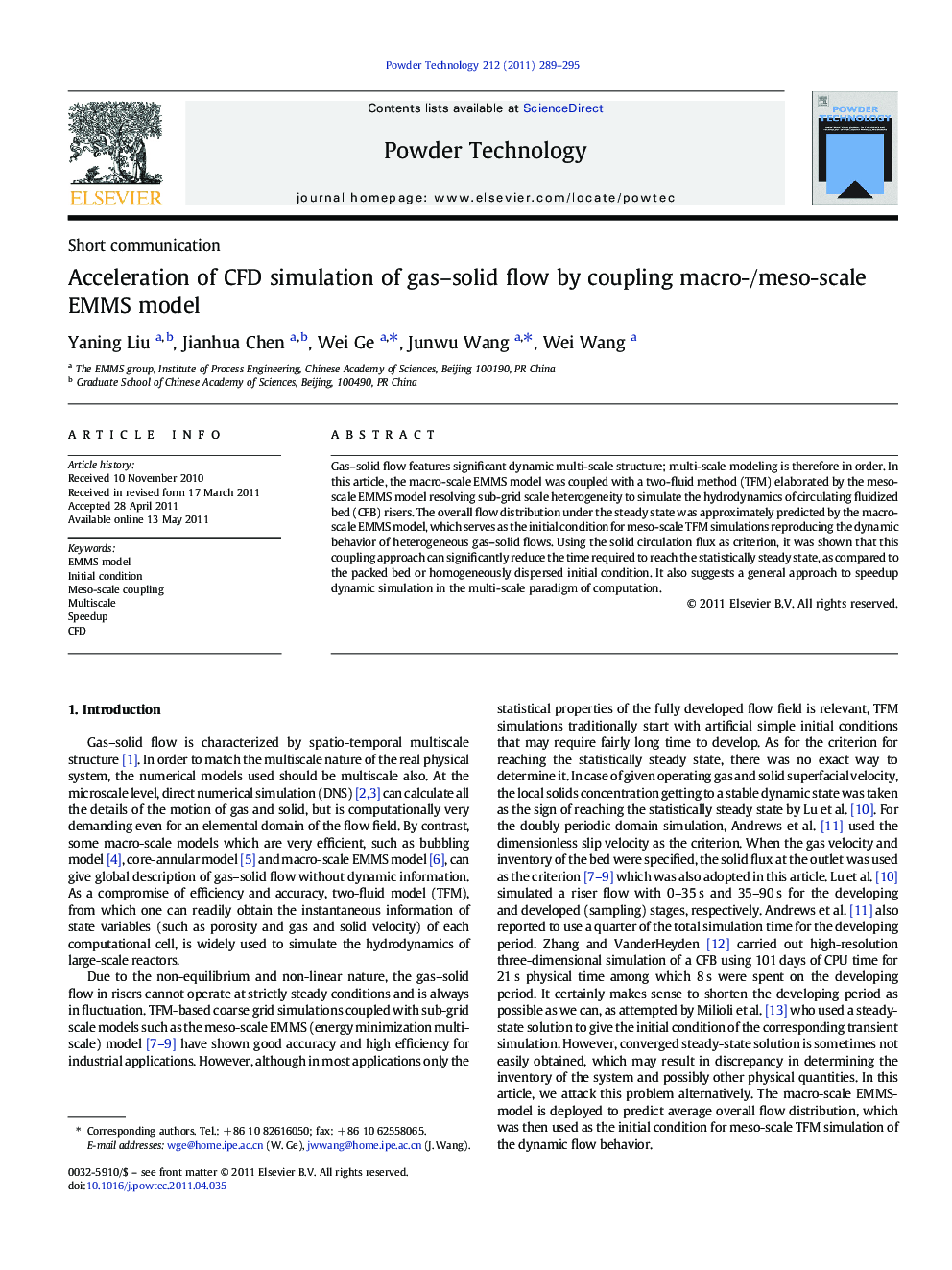| کد مقاله | کد نشریه | سال انتشار | مقاله انگلیسی | نسخه تمام متن |
|---|---|---|---|---|
| 237447 | 465707 | 2011 | 7 صفحه PDF | دانلود رایگان |

Gas–solid flow features significant dynamic multi-scale structure; multi-scale modeling is therefore in order. In this article, the macro-scale EMMS model was coupled with a two-fluid method (TFM) elaborated by the meso-scale EMMS model resolving sub-grid scale heterogeneity to simulate the hydrodynamics of circulating fluidized bed (CFB) risers. The overall flow distribution under the steady state was approximately predicted by the macro-scale EMMS model, which serves as the initial condition for meso-scale TFM simulations reproducing the dynamic behavior of heterogeneous gas–solid flows. Using the solid circulation flux as criterion, it was shown that this coupling approach can significantly reduce the time required to reach the statistically steady state, as compared to the packed bed or homogeneously dispersed initial condition. It also suggests a general approach to speedup dynamic simulation in the multi-scale paradigm of computation.
With the proper initial condition predicted by macro-scale EMMS model, the CFD simulation of heterogeneous gas–solid flows can reach the statistically steady state much faster than before. Furthermore, with meso-scale EMMS drag model considering the effect of sub-grid scale heterogeneity, the simulated results are in better agreement with expermental data, compared to those predicted using Wen and Yu/Ergun drag model.Figure optionsDownload as PowerPoint slideResearch Highlights
► Coarse grid simulations of heterogeneous gas-solid flow are carried out.
► The CFD simulations of heterogeneous gas-solid flows are accelerated by using the initial condition predicted by macro-scale EMMS model.
► The accuracy of CFD simulations is improved with the meso-scale EMMS drag model considering the effect of sub-grid scale heterogeneity.
Journal: Powder Technology - Volume 212, Issue 1, 15 September 2011, Pages 289–295